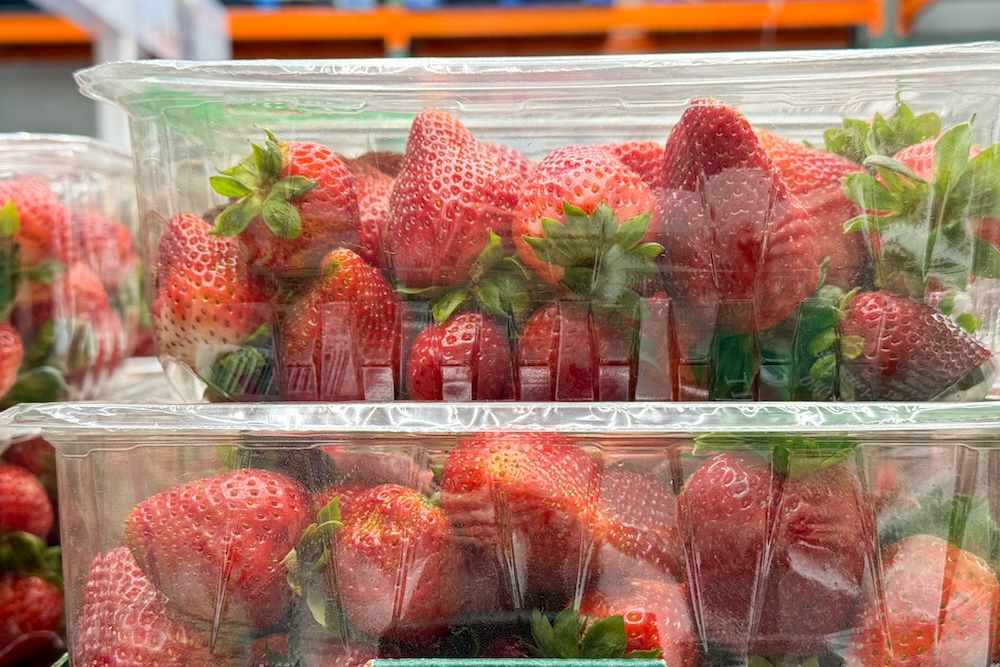Everyday Foods Laced with Microplastics
“No Straw, Please” — but What About the Strawberries?
You skip the straw. You bring your tote. You avoid single-use packaging like it’s your job.
But here’s a harsh reality that doesn’t come with a cheerful recycling symbol:
You’re probably still eating plastic.
And not just from one source. From dozens. Every week.
It’s in your seafood, your salt, your produce, your tea bags, and the water you drink.
Sometimes it’s wrapped around your food. Other times? It is your food.
What Are Microplastics — and Why Should You Care?
Microplastics are plastic particles less than 5 millimeters in size.
Nanoplastics are even smaller — microscopic fragments capable of slipping through biological defenses.
They come from:
- Plastic packaging that breaks down over time
- Synthetic clothing fibers
- Industrial waste
- Tire particles in the air
- Food processing equipment
- And yes — that “eco-friendly” plastic wrap you trusted a little too much
The problem isn’t just pollution. It’s bioaccumulation.
Microplastics aren’t just passing through us. They’re building up — in our bodies, organs, and food supply.
The Menu You Didn’t Order: Foods Contaminated with Microplastics
Let’s break it down by category. Spoiler: no aisle is safe.
🐟 1. Seafood
Highest risk category. Microplastics are widespread in oceans and are:
- Ingested by plankton
- Eaten by fish, mollusks, and crustaceans
- Passed on to predators (including humans)
Shellfish like mussels and oysters are especially contaminated, since we eat them whole — digestive tract and all.
According to a 2021 study published in Environmental Pollution, people who eat seafood regularly may ingest up to 11,000 plastic particles per year.
💧 2. Drinking Water
Whether it’s bottled or from the tap, microplastics are in your glass.
- A 2018 study from Orb Media found 93% of bottled water samples contained microplastic particles.
- Tap water is often less contaminated — but still not immune, especially in urban areas.
Bonus twist: the average plastic water bottle leaches more the longer it sits in heat or light.
🧂 3. Table Salt
Salt is harvested from oceans, lakes, or rocks — all of which are now plastic reservoirs.
- Multiple global studies, including one published in Environmental Science & Technology, found that over 90% of commercial table salt brands contain microplastics.
- Sea salt is usually worse than rock salt or mined salt.
🍓 4. Fruits & Vegetables
As we explored in Plastic Roots, plants can absorb nanoplastics from contaminated soil and water.
- Lettuce, wheat, carrots, and rice have already tested positive for nanoplastics.
- Washing helps remove surface plastics — but not the ones embedded inside the tissue.
🥡 5. Takeout and Processed Foods
Foods packaged in plastic are often exposed to:
- Heat
- Friction
- Cutting or sealing machines
This can cause plastic fragments to flake off — especially into oily or hot foods.
Ever noticed the plastic container feels slightly warped after microwaving?
That’s not just a cosmetic issue — it’s a chemical one.
🍵 6. Tea Bags (Yes, Really)
Many commercial tea bags are made with nylon or PET plastic.
When steeped in hot water, they can release billions of plastic particles into your cup.
One study published in Environmental Science & Technology found that a single plastic tea bag can release 11.6 billion microplastics and 3.1 billion nanoplastics into just one brew.
How Much Plastic Are We Actually Eating?
The estimates vary, but they all share one thing: discomfort.
- The World Wildlife Fund estimated in 2019 that the average person consumes about 5 grams of plastic per week — roughly the size of a credit card.
- A study in Environmental Science & Technology suggested a yearly ingestion rate of 39,000–52,000 particles, depending on diet.
- That doesn’t include inhaled microplastics, which can also end up swallowed.
And none of this accounts for cumulative lifetime exposure — or what it does to us long-term.
What Happens to Plastic Inside the Human Body?
That’s the terrifying part. We don’t fully know.
What we do know:
- Plastics carry endocrine-disrupting chemicals (BPA, phthalates, flame retardants)
- These chemicals are linked to hormone disruption, infertility, inflammation, and cancer
- Nanoplastics can cross the blood-brain barrier, lodge in organs, and impact fetal development
Studies have found microplastics in:
- Human lung tissue
- Bloodstreams
- Placenta
- Breastmilk
You can eat clean. Live green. Filter your water. But if the systems around you are saturated with plastic — so are you.
What Can We Do?
We can’t plastic-proof the planet overnight, but we can reduce our exposure:
- 🍽️ Use glass or stainless-steel containers
- 💧 Filter drinking water with a microplastic-capable filter (look for sub-micron filtration)
- 🧂 Buy unrefined mined salt instead of sea salt
- 🛍️ Avoid ultra-processed and heavily packaged foods
- 🌿 Grow your own produce using clean soil and non-plastic containers
- 🍵 Switch to loose-leaf tea or plastic-free bags
- 🌊 Support policy changes that reduce plastic use and invest in safer packaging
And above all: keep asking questions. The food system isn’t going to clean itself up.
Final Thoughts
We’ve spent decades wrapping our food in plastic, cooking with it, storing it, microwaving it, shipping it, and tossing it — all while calling it convenience.
Now? That convenience is pushing back.
We’re not just throwing plastic into landfills anymore. We’re throwing it into our mouths, one bite at a time.
Would you like some plastic with that?
Because you’re already getting it.









Reader Interactions